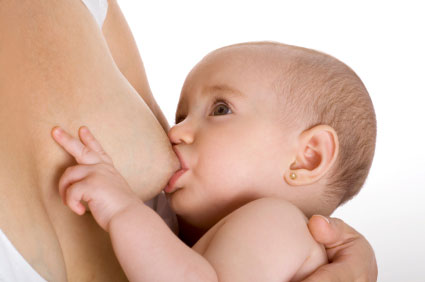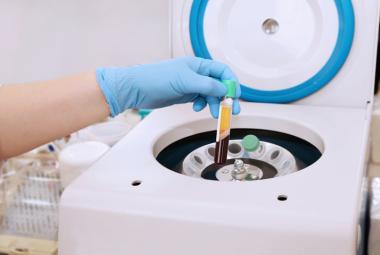Initiation of breastfeeding as early as possible is beneficial for the mother and the child, (short-term and long-term); this view is now commonly accepted and commonly practiced. Skin-to-skin contact (SSC) is certainly not a new concept but is not widely known. This is unfortunate since the practice of SSC early after birth and during breastfeeding is highly beneficial.
It has been found that when newborns are simply placed on their mother’s chest, they will naturally suckle without interference in the time span of approximately 1-2 hours. Before suckling, infants tend to massage the breast with their hands to stimulate letdown. (1) Also, just by SSC between the mother and the child, there is corresponding oxytocin release in a pulsatile manner. (2) The implications of this hormonal effect are most positive. Oxytocin release immediately aids in the letdown of human milk, which facilitates the natural process of breastfeeding. This however is just on the surface; the hormonal effects in both the mother and child extend beyond breastfeeding. Oxytocin causes dilation of blood vessels at the surface of the skin, providing warmth and comfort to the baby. (3) Simultaneously, bonding between mother and child occur; this is critical to changes in maternal behavior that lead to inclinations to nurture and become attached (maternal instinct).
Relaxation occurs due to the effects of oxytocin, in both the mother and the child; oxytocin is a potent mediator of stress hormones such as cortisol. After oxytocin release, there are corresponding drops in cortisol and blood pressure. This promotes a significant calming effect for both the mother and the child. (4)
References:
- Widstrom, A. M., A. B. Ransjo-Arvidson, et al. (1987). "Gastric suction in healthy newborn infants. Effects on circulation and developing feeding behaviour." Acta Paediatr Scand 76(4): 566-572.
- Matthiesen, A. S., A. B. Ransjo-Arvidson, et al. (2001). "Postpartum maternal oxytocin release by newborns: effects of infant hand massage and sucking." Birth 28(1): 13-19.
- Eriksson, M., T. Lundeberg, et al. (1996). "Studies on cutaneous blood flow in the mammary gland of lactating rats." Acta Physiol Scand 158(1): 1-6.
- Uvnas-Moberg, K. (1996). "Neuroendocrinology of the mother-child interaction." Trends Endocrinol Metab 7(4): 126-131.







